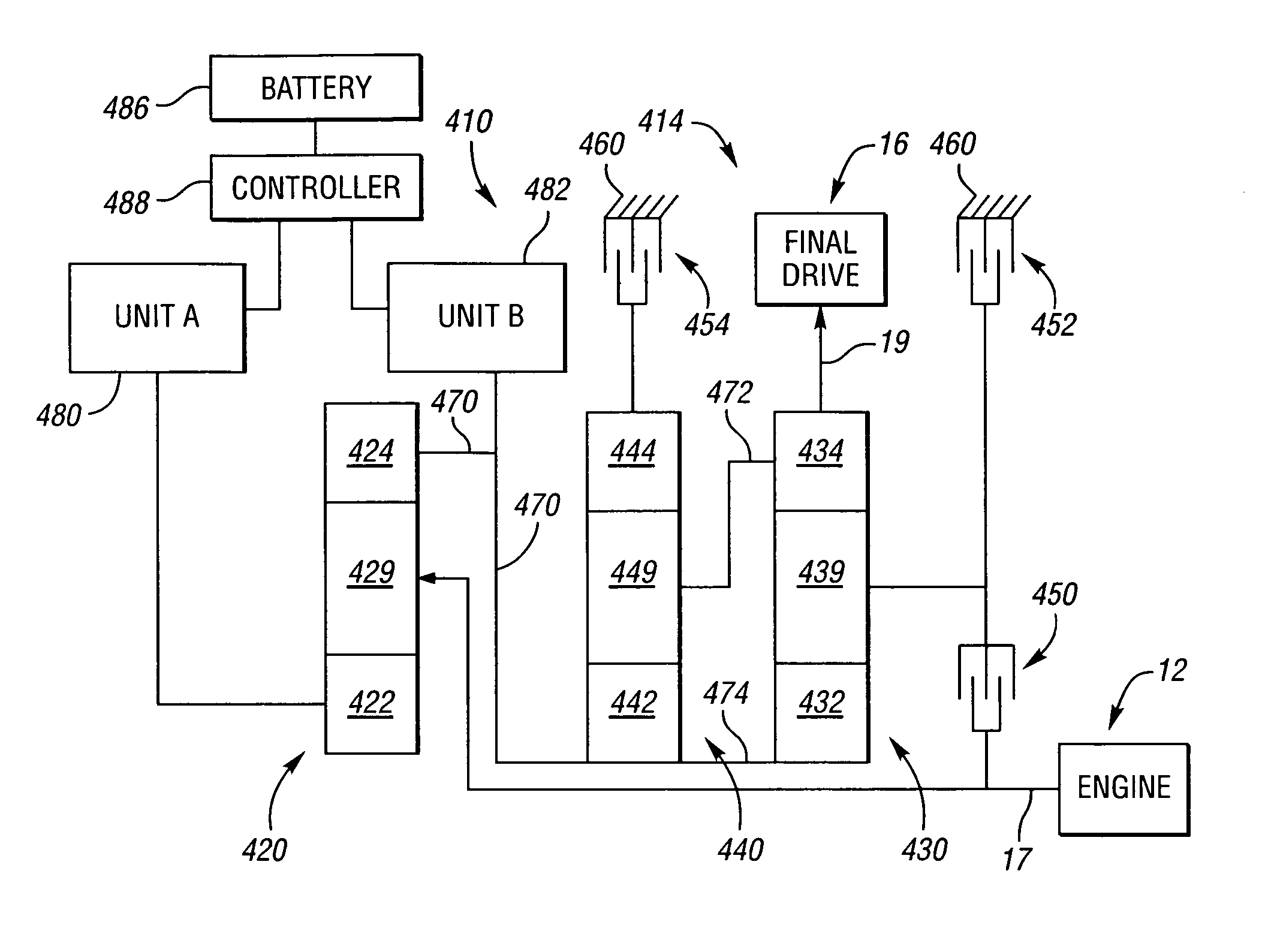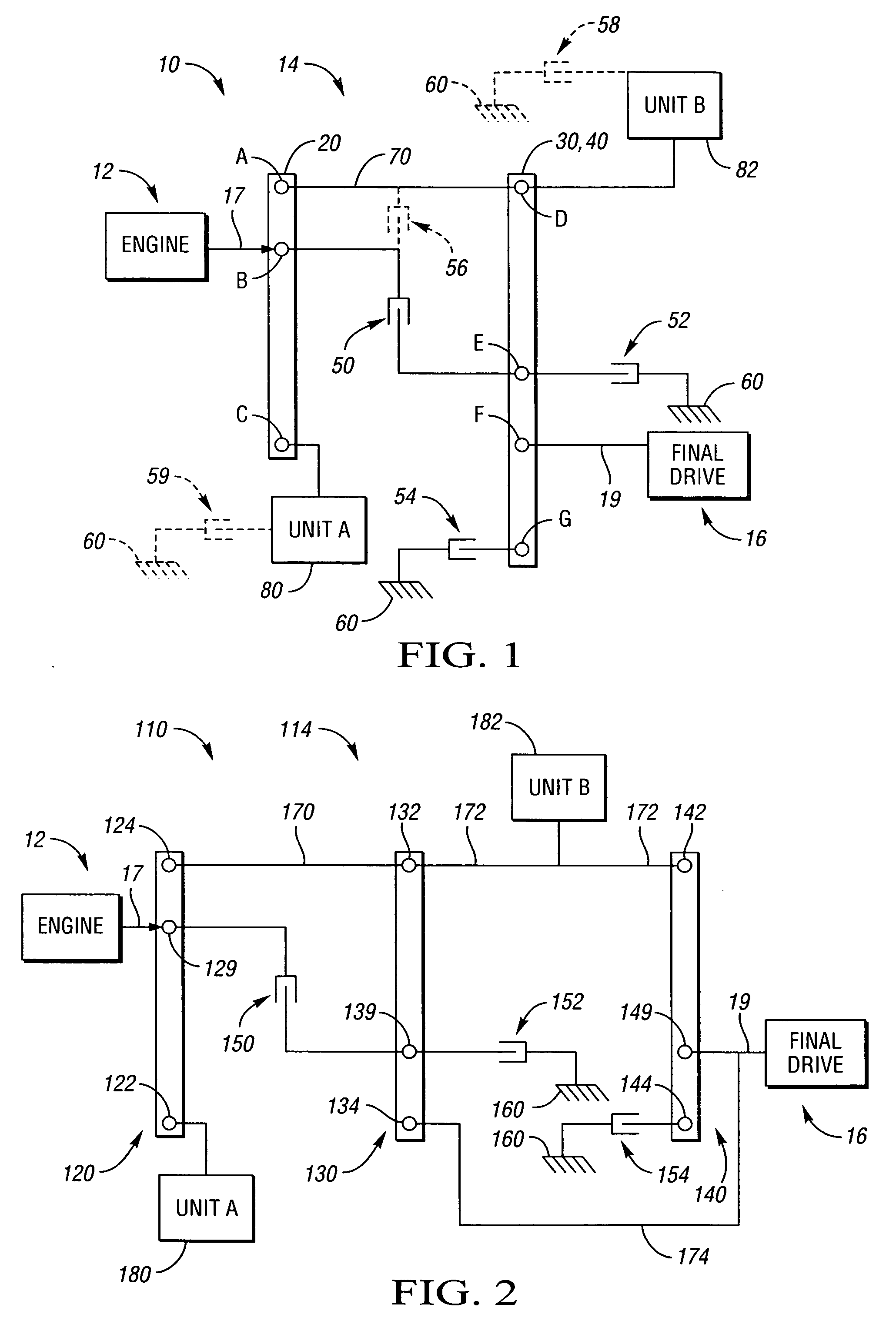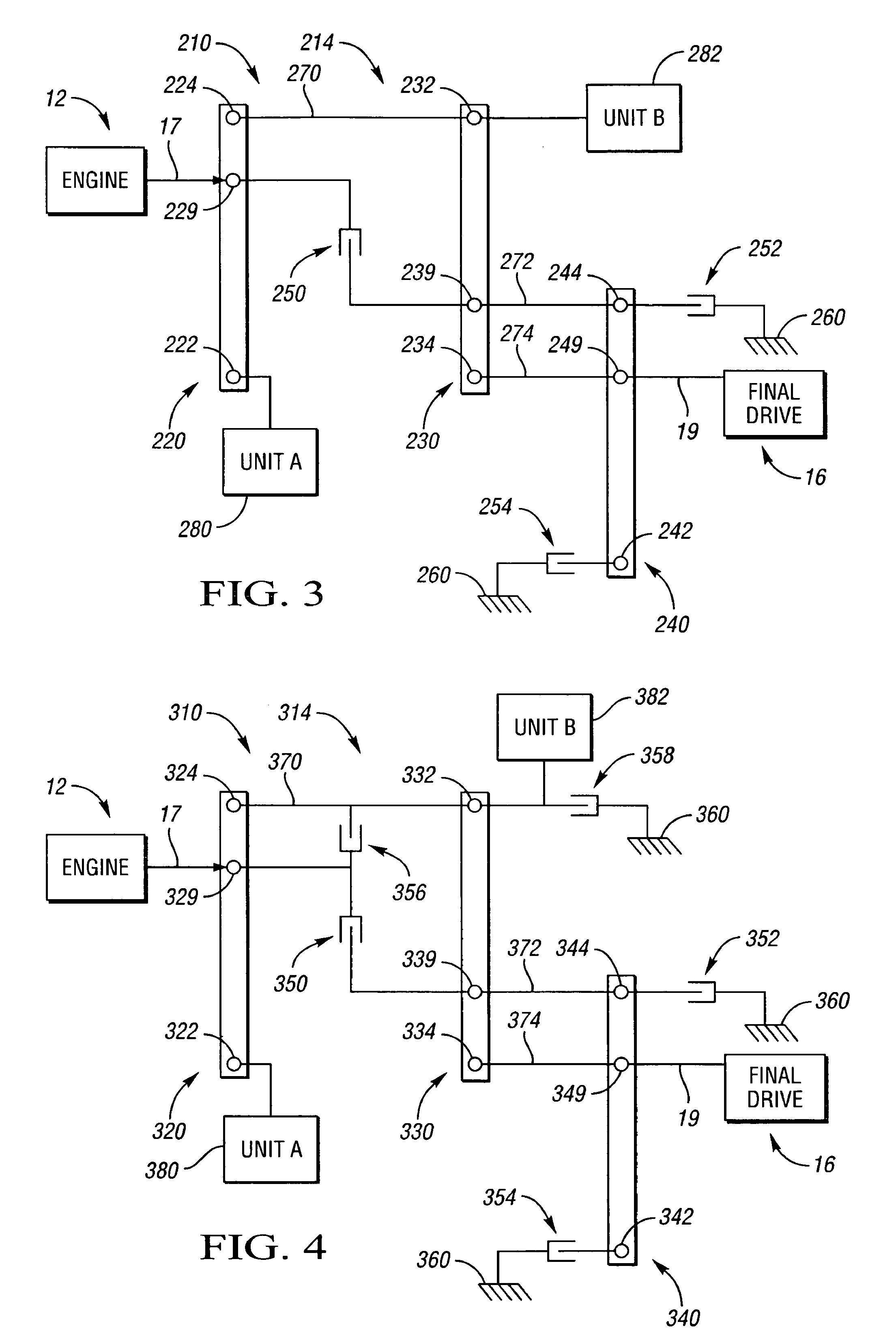Dual mode EVT with input split reverse mode
a reverse mode and dual-mode technology, applied in mechanical equipment, transportation and packaging, gearing, etc., can solve the problems of increasing the fuel consumption and emissions beyond the ideal case, the weight and cost of series electric drives are too high for sufficient electric machinery, and the useful energy loss is increased. , to achieve the effect of reducing the weight of the series electric driv
- Summary
- Abstract
- Description
- Claims
- Application Information
AI Technical Summary
Benefits of technology
Problems solved by technology
Method used
Image
Examples
Embodiment Construction
[0040]Referring to the drawings, wherein like reference numbers refer to like components, FIG. 1 shows a powertrain 10 including an engine 12 connected to one embodiment of an electrically variable transmission (EVT) designated generally by the numeral 14. The transmission 14 is designed to receive at least a portion of its driving power from the engine 12. The engine 12 has an output shaft that serves as an input member 17 of the transmission 14. A final drive unit 16 is operably connected to the transmission 14 via an output member 19. The transmission 14 includes three planetary gear sets represented in lever diagram form in FIG. 1, as will be readily understood by those skilled in the art. A lever or first planetary gear set 20 includes a first, second and third node A, B, C, respectively. The nodes A, B and C represent a first, second and third member of the first planetary gear set 20, preferably a ring gear member, a carrier member and a sun gear member, although not necessar...
PUM
 Login to View More
Login to View More Abstract
Description
Claims
Application Information
 Login to View More
Login to View More - R&D
- Intellectual Property
- Life Sciences
- Materials
- Tech Scout
- Unparalleled Data Quality
- Higher Quality Content
- 60% Fewer Hallucinations
Browse by: Latest US Patents, China's latest patents, Technical Efficacy Thesaurus, Application Domain, Technology Topic, Popular Technical Reports.
© 2025 PatSnap. All rights reserved.Legal|Privacy policy|Modern Slavery Act Transparency Statement|Sitemap|About US| Contact US: help@patsnap.com



